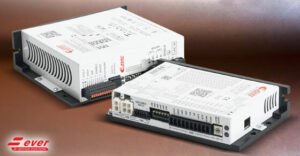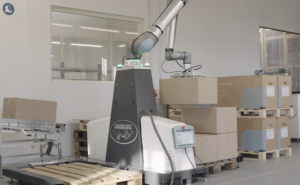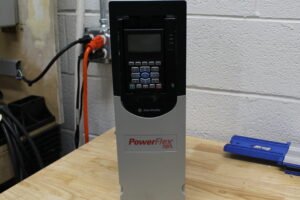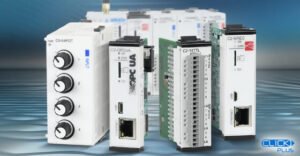The Allen-Bradley PowerFlex drives from Rockwell Automation have become a mainstay in industrial automation for flexible and powerful motor control solutions. PowerFlex 40 and PowerFlex 40P series are two distinct options among its Compact-class AC drives. Today, we will give a head-to-head comparison with in-depth insights into the features and control capabilities of the two drives.
PowerFlex 40 and PowerFlex 40P Drives
For an overview, both Powerflex 40 and PowerFlex 40P are compact and cost-effective choices for standalone machine control. Both drives are designed for easy integration with industrial automation systems and machinery. The Powerflex 40 series is similar to the PowerFlex 4 series but has extended power ratings and Sensorless Vector Control. The PowerFlex 40P is more advanced than the PowerFlex 40 regarding control and safety with closed-control and Safe Torque-Off functionality. There are other differences in I/Os and drive configurations. Let’s dig into the details of other differentiators, such as control options, communication, and I/Os.
Electrical Specifications
PowerFlex 40 series drives have a broad range of voltage classes, which include 100 to 120V, 200 to 240V, 380 to 480V, and 500 to 600V. The power ratings range between 0.5 to 15 HP. While the PowerFlex 40P drives also have a wide range of voltage classes, they don’t provide the low voltage option of 100 to 120V. The horsepower rating is similar, up to 15 HP. Both the drives can accommodate single-phase operation. However, PowerFlex 40P implements a 65% derating on current for single-phase applications.
Control Modes and Options
The primary differentiator between both the drives is their control capability. Sensorless Vector Control is featured in both drives as the default mode for substantial torque and precise motor speed control across the full-speed range. PowerFlex 40 and PowerFlex 40P both support voltages per Hertz (V/Hz) and process PID control. However, the PowerFlex 40P can provide finer speed adjustments with an 80:1 speed regulation range compared to the PowerFlex 40’s 60:1 speed regulation.
The PowerFlex 40P drives have an edge over the PowerFlex 40 as they offer closed-loop motor control with speed or position feedback. PowerFlex 40P achieves precise speed regulation and basic position control through Incremental Encoder Feedback and Pulse Train Input. In contrast to this, the PowerFlex 40 only supports open-loop speed regulation with an autotune feature that adapts to individual motor characteristics without feedback devices. This limits the PowerFlex 40 only to applications where feedback control is not necessary.
Drive Configuration and I/O Terminals
Both PowerFlex 40 and Powerflex 40P have similar drive configurations, as they can operate in Source (SRC) and Sink (SNK) modes, with SRC as the default. However, the PowerFlex 40P drives also provide enhanced digital input configurations. There are five fully programmable and two semi-programmable digital inputs in the PowerFlex 40P drives. However, there are only four fully programmable and three fixed inputs in the PowerFlex 40. The two drives are also slightly different in terms of analog outputs. The PowerFlex40P features a single fully selectable output, while the Powerflex 40’s single analog output is limited to certain selectable ranges.
Both series offer opto-coupled digital outputs and relay outputs. However, the PowerFlex 40P also includes a programmable Form C relay. This relay can be customized to specific signaling conditions required by different applications. Analog inputs in both the drives support bipolar and unipolar configurations for differential current and voltage inputs. The versatile I/O configurations allow for customization for different motor control tasks.
Communication
Both PowerFlex 40 and 40P drives have integrated RS-485 communication capabilities, which allow connections in multi-drop networks. Modbus RTU protocol support further enhances this by allowing the drives to be used with any RTU Master device compatible with standard commands. Optional communication modules like EtherNet/IP, ControlNet, BACnet, and DeviceNet can be used for broader automation networks.
However, the drives have different communication configuration methods. The PowerFlex 40 drive uses a Serial Converter Module (SCM) to communicate with controllers having DF1 ports, while the PowerFlex 40P requires an external controller to assume the RTU Master role and streamline the network configuration.
HMIs
The PowerFlex 40P drive stands out as more flexible when it comes to programming and operational control. It has an enhanced Human Interface Module (HMI) that includes an integral display and reset button for convenient access to display parameters and fault resets directly on the drive. There is a 4-digit LED with 10 indicator LEDs showing the drive’s status and configuration settings. PowerFlex 40 only offers an optional local keypad with basic control keys and a potentiometer.
Both PowerFlex 40 and PowerFlex 40P include the popular CopyCat function, which enables the duplication of settings from one drive to another for multiple setups. The PowerFlex 40P drives also offer an Enhanced Program Group for advanced configuration. This group contains additional parameters for position control and fiber applications, giving PowerFlex 40P an edge in complex control.
Mounting and Environmental Features
Panel and DIN rail mounting options are standard for both series. The PowerFlex 40P offers DIN rail mounting for B-frame drives only, but the PowerFlex 40 series extends this feature to A-frames as well. For environmental ratings, the PowerFlex 40P supports IP66/NEMA/UL Type 4X/12 enclosures for dust and water protection and complies with NSF standards. Both series also allow Zero Stacking mounting. This feature permits close installation, maximizes panel space, and still maintains operation up to 50°C.
Both series also include EMC-compliant filters for Class A and B standards. The PowerFlex 40 offers an integrated filtering option for 230V single-phase drives, which makes it compliant with EN55011 EMC requirements without external components.
Safety
PowerFlex 40P drive includes the DriveGuard Safe Torque-Off (STO) option, a certified safety feature compliant with PL d, Category 3 (EN ISO 13849-1), and SIL 2 (IEC 61508). This feature prevents motor torque generation and provides a higher level of protection for both personnel and equipment in failsafe operations. The PowerFlex 40 lacks an integrated STO function and relies on additional safety modules for similar protection.
Application Suitability
PowerFlex 40 drives are commonly used in general-purpose applications like speed control for fans, conveyors, and pumps. Its simple interface and compact design make it easier to integrate and operate. PowerFlex 40P, on the other hand, has closed-loop control and position feedback capabilities, which make it better suited to tasks like material handling, packaging, and fiber-spinning machines where precise speed and position control are needed.
Conclusion
Both the PowerFlex 40 and 40P drives have excellent motor control capabilities when it comes to a compact design. However, considering the discussion above, there are differences in the two drives that make them better suited to certain applications. The PowerFlex 40 is a straightforward and cost-effective solution for basic motor control. On the other hand, the PowerFlex 40P has enhanced precision with feedback control, STO functionality, and programming flexibility.
If you are looking to take your automation solution to the next level, we at Do Supply have you covered! We have everything from PLC’s, motors, and the very PowerFlex 40 drives you had just read about. Give us a call or email us today to have your next step in automation delivered quickly!














Post Comment